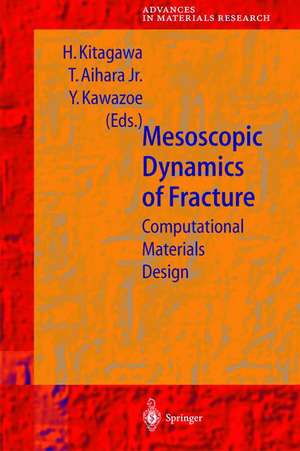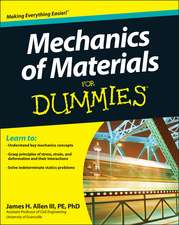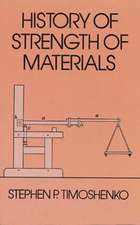Mesoscopic Dynamics of Fracture: Computational Materials Design: Advances in Materials Research, cartea 1
Editat de Hiroshi Kitagawa, Tomoyasu Jr. Aihara, Yoshiyuki Kawazoeen Limba Engleză Hardback – 20 oct 1998
| Toate formatele și edițiile | Preț | Express |
|---|---|---|
| Paperback (1) | 638.89 lei 6-8 săpt. | |
| Springer Berlin, Heidelberg – 8 dec 2010 | 638.89 lei 6-8 săpt. | |
| Hardback (1) | 642.68 lei 6-8 săpt. | |
| Springer Berlin, Heidelberg – 20 oct 1998 | 642.68 lei 6-8 săpt. |
Preț: 642.68 lei
Preț vechi: 756.09 lei
-15% Nou
Puncte Express: 964
Preț estimativ în valută:
122.99€ • 133.55$ • 103.31£
122.99€ • 133.55$ • 103.31£
Carte tipărită la comandă
Livrare economică 22 aprilie-06 mai
Preluare comenzi: 021 569.72.76
Specificații
ISBN-13: 9783540642916
ISBN-10: 3540642919
Pagini: 268
Ilustrații: X, 254 p.
Dimensiuni: 155 x 235 x 20 mm
Greutate: 0.48 kg
Ediția:1998
Editura: Springer Berlin, Heidelberg
Colecția Springer
Seria Advances in Materials Research
Locul publicării:Berlin, Heidelberg, Germany
ISBN-10: 3540642919
Pagini: 268
Ilustrații: X, 254 p.
Dimensiuni: 155 x 235 x 20 mm
Greutate: 0.48 kg
Ediția:1998
Editura: Springer Berlin, Heidelberg
Colecția Springer
Seria Advances in Materials Research
Locul publicării:Berlin, Heidelberg, Germany
Public țintă
ResearchCuprins
1. General Reviews, 2. Deformation and Fracture, 3. Criteria for Fracture, 4. Defects and Interfaces, 5. Electronic Structure Calculations, 6. New Computational Methods
Textul de pe ultima copertă
This book is a review of the present theoretical approaches to the understanding of the dynamic behaviour of fracture. Specifically, it collects recent works with a mesoscopic point of view. Starting from the first principles, standard classical molecular dynamics and elastic theoretical treatment are applied to realistic problems. A review article written by Professor Luc Wille, followed by about 20 high-quality papers, each having specific topics, are included.
Caracteristici
In this book fracture is treated theoretically for this first time.




















